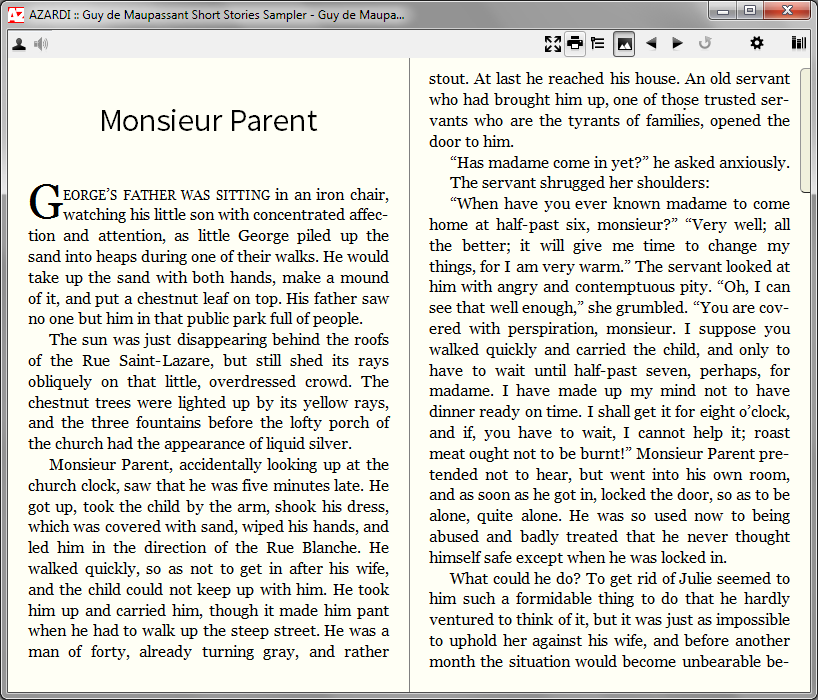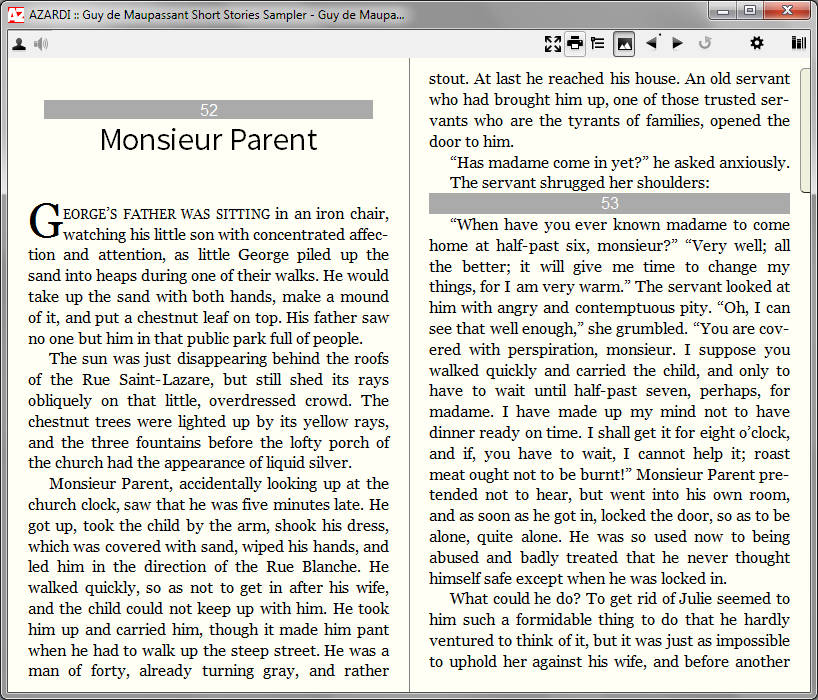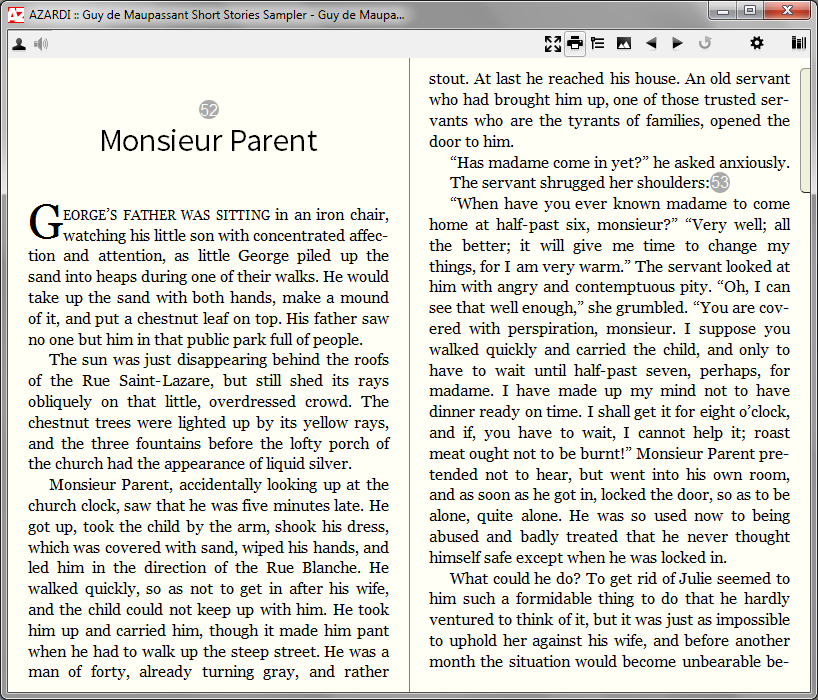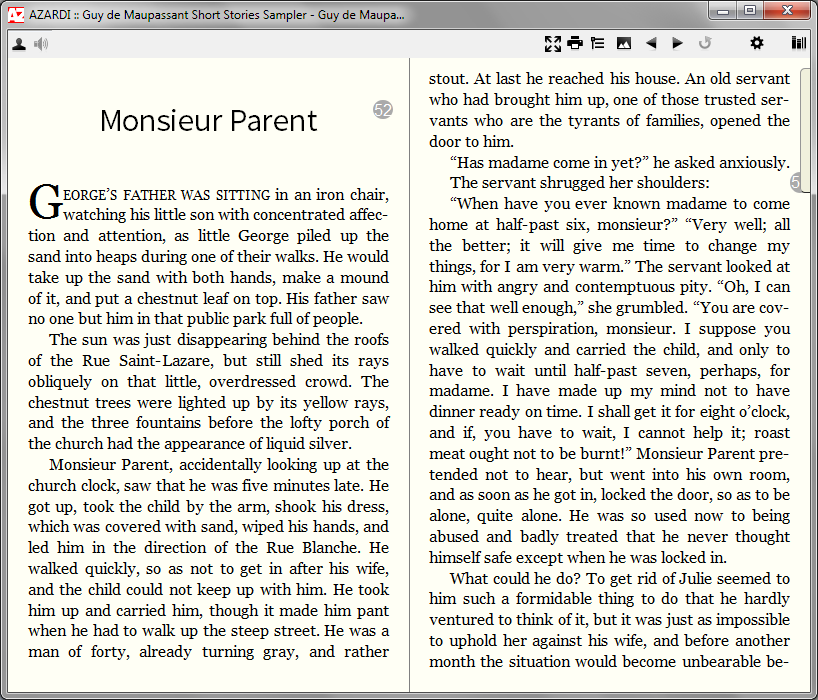Remix 2. Sampler, Selected and Omnibus Editions
26 April 2013
We have been REMIXing the complete Guy du Maupassant short stories in different ways both to test the new tools in IGP:Digital Publisher and to learn how to do it using multiple formats.
We have been REMIXing the complete Guy du Maupassant short stories in different ways both to test the new tools in IGP:Digital Publisher and to learn how to do it using multiple formats.
REMIX is a primary power tool for education and academic content but it empowers the reuse and extends the value of content in many different ways:
- It allows the creation of new book products from existing published products by recombining books, sections and content blocks into new books.
- Creating Omnibus editions like the Guy de Maupassant Omnibus edition example below.
- Assembling sections into new books such as short stories, poetry or other suitable content into new books; as in the Guy de Maupassant Selected Stories edition below.
- Serializing larger books like we "should have done" with the Guy de Maupassant Large Print Omnibuss edition example below. It's 2092 pages in the large-print edition!
- Creating sub-lesson sections of complete text books for distribution.
- Promotional sections and advertisements for different editions like the Guy de Maupassant sampler edition below.
- Other REMIX power ideas not yet thought of.
IGP:Digital Publisher REMIX enables a publisher to immediately create any of these products from the content stored in IGP:Digital Publisher.
Guy de Maupassant: The Story of Stories
We started on this journey just two weeks ago. Read the project start-up post here.
After two weeks of hard production work there are 13 Volumes of Guy de Maupassant's short stories available to the world. Each edition is in five formats.
More importantly there a three new editions REMIXed from those 13 books and the REMIXed books have ALL the same formats as the originals.
Sampler Edition. This takes two stories from each of the 13 volumes for a total of 26 stories. These are generally shorter stories for those with limited attention spans.
Selected Stories. There are 38 editorially selected stories in this edition. They are a combination of recognized classics and personal favourites.
Ominbus Edition. This monster is all of the 13 editions remixed into one massive volume. There are 1569 pages in the A5 print edition.
The five selected formats are a reasonable representation of what a publisher needs for distribution of a book to all possible channels.
A5 Trade Paperback for Print. This is the first print edition. We could have done Hardcover as well, but this is a demonstration.
A5 RGB PDF for Google books and other PDF channels.
B5 Large Print edition for Print On Demand
ePub3 Reflowable. We can make an ePub2 just as easily but this is a look-ahead ePub3 exclusive features in these editions.
Mobi for Kindle. Because Amazon is the 800lb Gorilla apparently and short stories fits their limited reader functionality.
Planning and Issues
This REMIX exercise was both a testing and training exercise using the new features in IGP:Digital Publisher. We learnt a lot and will be posting a tutorial article on all of the issues that need to be thought-through and addressed when creating, maintaining and using digital content to create new works.
What may not be obvious from the books is the REMIX operation included all the typesetting adjustments for the three PDF editions and all the styling, presentation and design issues for the two e-book editions. That's really important because the typography is the major production effort.
It takes planning and a lot of thinking to create major products by REMIXing, especially when using Design Profiles. We have been involved with a lot of similar projects with education publishers over the years and are working with them even now. The secret is consistent, reliable XHTML tagging.
The content is tagged using the IGP:FoundationXHTML core tagging patterns which eliminate costly, resource consuming and time-wasting XML systems, while ensures processing, presentation, styling and layout all work consistently together.
When using XHTML5 it is as important to use it as consistently and correctly as you would with XML tagged content. Most of the HTML5 rules stated on the WHATWG site are about internet or web content, not valuable publisher content designed for future reuse and remix. We have extensive information about using XHTML/5 for publishing on the IGP:FoundationXHTML Specification site. This consistent, quality controlled tagging approach has been working consistently since 2007 for tens of thousands of books and documents.
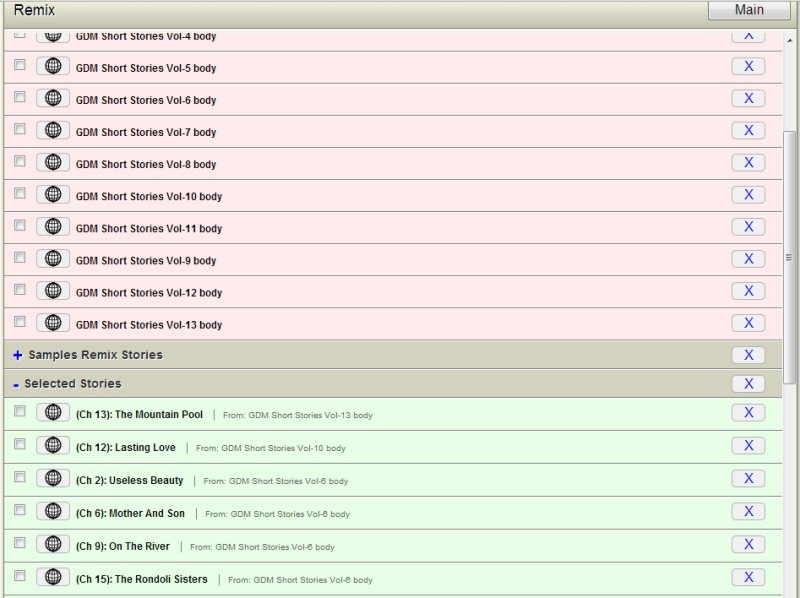
The REMIX Library Interface. It looks boring, but it is actually very interesting. At the top in shocking pink are the full edition body files, ready to assemble into the omnibus editions. In the stylish green Selected Stories category you can see the individual stories that have been remixed out of their individual volumes, ready to be assembled into the shiny new Selected Stories edition. All we have to do to mix it into an active document is click the button.
Get the Books
You can download all 16 books in your choice of formats from the GDM Download page on APEX@IGP.
"Guy du Maupassant ... is considered one of the fathers of the modern short story and one of the form's finest exponents: Wikipedia". He is a master of the last paragraph denouement. Not only is this project a technical tour-de-force, it is a darn good read.
Make sure you read them using AZARDI if you want to explore and understand the ePub3 page-break feature. It is currently the only ePub3 Reading System that uses the Pagebreak feature (as limited as the specification is). The REMIX 1 Post has more information on using the page-break feature both in production and in Reading Systems. It is of course particularly impressive on the Omnibus edition with nearly 1600 pages.
Using Page-break in AZARDI
The Page Navigation TOC is particularly impressive in the Omnibus ePub3 edition. The section styled presentation gives an exact view of the dimension of each story and the book as a whole.
In addition to the Page Navigation AZARDI supports user-choice viewing of the actual page-break position in the book. Click the "Show Print Page Numbers" button. Each time you click it will change the page-break presentation. This little animation show you how to access the page markers and what happens as you click the button.
On that little ePub3 specification theme, every time I read about the new weirdness features the IDPF is planning for ePub3, the story "Waiter, A Bock!" (the last story in the Selected Stories Edition) seems to express the reaction inspired to handle the craziness of it all.
And in conclusion
- Big remix jobs involving multiple formats requires design and planning of all the details before production starts.
- If editions are going to have the same cover the job is a lot less complex. In this job we had to handle the design profiles for front-matter independently for each book and format.
- Complete tests are needed to ensure all formats will generate reliably. If that is done remixing has minimal production overhead.
- Once the source tagging and styling is created consistently, reliable multiple edition remixing is easy.
- It's too easy to make 2,000 page books; it's also easy to plan the size of editions so do that.
- REMIX is hard-work and fun.
- This could easily be extended to an online choose your own stories user mixed book. We will be looking at that!
Even more exciting is, that very soon, all of these books will be available on an AZARDI:Content Fulfilment Bookstore near you. That means you will be able to read the books in AZARDI Desktop, AZARDI Online and on your Android and IOS smart tablet/thingy with AZARDI Mobile. You can also download a Watermarked ePub edition as well.
Posted by Richard Pipe
